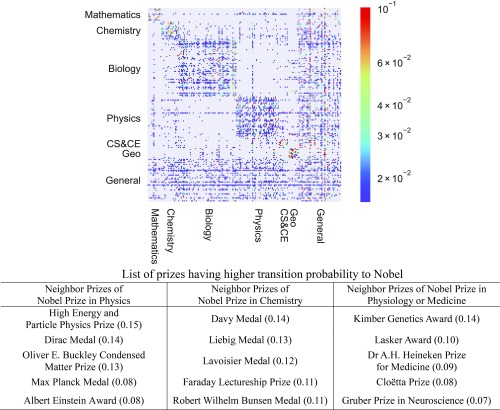Fig. 4.
Scientific prize transition matrix. When two different prizes are won by the same scholar(s), they form an interlock between prizes. The interlock designates a pathway of knowledge flows within and between subdisciplines. Interlocks also represent the propensity for winning a prize conditional on winning another prize. These propensities are represented by the values in the transition matrix of the prize network. Chemistry and physics have relatively high transition probabilities among prizes relative to math and biology. General prizes play the unique role of integrating diverse sciences. The table below the transition matrix shows the prizes with the highest transition propensities to the Nobel prizes (the transition probabilities are shown in brackets).

